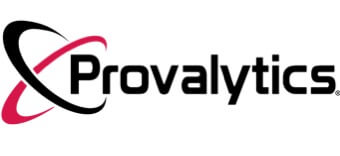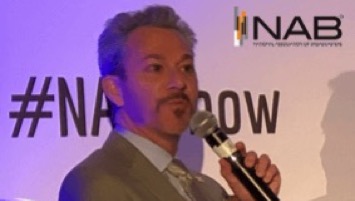Provalytics CEO on Importance of Data for Radio’s Future
In the fast-paced and ever-changing digital landscape, radio stations are facing increased competition and must adapt to stay relevant. With the wealth of data available, investing in data analytics is becoming increasingly important for radio to compete and engage with their listeners. This interview delves into the importance of data for the future of radio and how stations can use it to improve programming and advertising strategies. By collecting data on their listeners’ preferences and habits, radio stations can make informed decisions on their target audience, music selection, and advertising placements, leading to a more personalized and engaging experience for their listeners.
Radioinfo’s Wayne Stamm spoke to Jeff Greenfield at the NAB Show in Las Vegas who tells radio “It’s time for us to put on our big boy pants, radio has to grow up…”.
🚀 Yes, I Want The 2024 Playbook!
“Radio’s reach, especially during the day, is becoming more attractive for advertising. If radio want to be around decades from now, they are going to have to invest in data, and the right kind of data.”
– Jeff Greenfield
Wayne Stamm for RadioInfo
I was really interested in one of the things you were saying today. So there’s been a real change in what’s happened. We’re seeing people coming back to radio now?
Jeff Greenfield
That’s absolutely true. They found that digital doesn’t have the full ‘opportunity to view’ that traditional media has. In traditional media (Radio, TV, Print) you buy something, and you pay for it when it runs. And if it doesn’t achieve the ratings, or the promises that are there, there’s make goods that are involved with that. That’s been the history of all traditional media. If you pay for a radio spot, and they forget to run it, or there’s a big announcement, and it doesn’t run, you don’t get charged for that. But in the digital realm, what happens is that just because of how the internet is designed, you have to scroll to get content. And so if you buy a million ads, half those ads are going to be down below the fold. And you still have to pay for those. Now, digital has kind of shifted around and fixed their problem because now the currency of digital is based upon an ad has to be in view. So they have a make good system – but that just came into being in the year to year and a half. And so digital is really getting its footing. But what that has done is given brands time to kind of play around in the digital realm. And what they found is that digital tends to be and of course, digital doesn’t want to be this, but digital tends to be a lower funnel medium. So digital is very good at getting a message across right at that moment of purchase or right before that purchase. It’s kind of like the end cap at a supermarket aisle – they’re very, very good at that. But they’re not good at the upper funnel messages. I always like to to remind clients who get all excited about YouTube and how great it is and how it’s a replacement for TV that Judge Judy has more reach than all of YouTube. Network radio and radio in general has a tremendous amount of reach. And that’s why advertisers are going back to traditional media – because what they have found is that they are moving back to TV at night when people are at home. But during the daytime, the way to reach people is that more people are streaming radio while at work. You notice it every day you go into work. You notice people have got these ear pods in these earphones on and what are they doing? They’re listening to radio. And what P&G has found, because P&G is one of the biggest buyers of network radio. In fact, several quarters ago, they bought up everything that was available, because the best way to get out their message during the daytime hours is radio.
Wayne Stamm for RadioInfo
That’s an interesting story on its own. So you’ve you’ve had situations where some of those companies that bought digital early in the piece and we’re spending big on it decided that they’d take a closer look at what they were spending and how that was working.
Jeff Greenfield
Yeah, they did. They found that a couple of things. One is that they were buying digital across several hundred thousand sites. So they wondered what would happen if they eliminated all except for 5000 sites – it obviously would have an impact, right? So they eliminated all except for the 5000 most important, cut their spend dramatically, and there was no impact. So then they cut their cut their digital budget in half, and still no impact. And it’s because for a lot of brands that are spending on radio and on traditional media, you have these long ‘consumer journeys’. Meaning the timeframe that a consumer is in market is very, very long, and the ‘in-market purchase frequency’, how often a consumer makes that purchase, is not something that they do every week, not something they do every two weeks, it’s maybe something they do only every couple of years. And radio is a perfect element to do that. Digital not so much. Digital is great when they’re searching for something, need a quick answer, but it’s not good for these long consumer consumer journeys.
Wayne Stamm for RadioInfo
Now the biggest problem with radio at the moment is I don’t think that they really understand data particularly well, and what sort of data that they should be supplying? We’re still stuck, I guess on the rating situation. And how many people listened last week? It’s not all that helpful, I guess.
Jeff Greenfield
Data can be your friend, and it can be your foe. The biggest problem that radio has is that and the one reason they have yet to really go all in on, on investing in data is the fear about what happens if we do this study, for customers to find out the impact that we have? And we find out that it’s not as great as we once thought it was, and we’ve done all these studies in the past, we know that there is an impact. But when we start going in and we start providing this type of data results at Facebook and Google have that a real time what happens if we find that all of a sudden it worked a moment ago, but it’s not working right now? How do we respond to that? Are we able to bob and weave the way digital has? So that’s Radio’s big problem. It’s time for us to put on our big boy pants, radio! Radio has to grow up and realize that if they want to be around decades from now they have to invest in data, they have to spend millions of dollars. And we’ve seen this already happened with some of the big networks. But what they’re doing is, in some cases, I hate to say it, they are deceiving advertisers. They’re using data in the wrong way. They’re looking at some correlation. And correlation does not always equal causation. You’ve got some big radio networks that are trying to take credit for everything that happens on a website from point A to 20 minutes and in some cases, 30 minutes after, unless a radio monologue. Comcast right now is out with a product where they’re trying to convince advertisers that 30 minutes after one of their TV spots airs on Spotlight, that they should get credit for everything that happens. And that’s just garbage! What you need to realize is that data will help you, but you can’t just take credit for everything because this is no longer the days of taking credit for everything. Credit now has to be shared. This is the days of fractional credit. That’s what attribution is all about. You have to attribute credit and you get a little bit of piece at a time That’s the way it works.
This interview was at the NAB in Las Vegas and originally appeared in Radio Info


